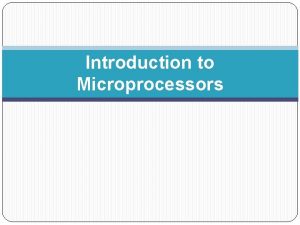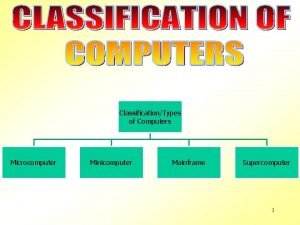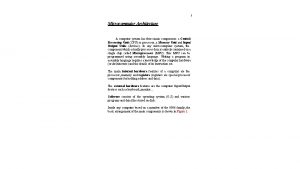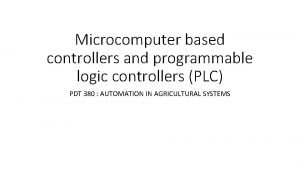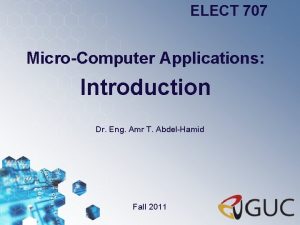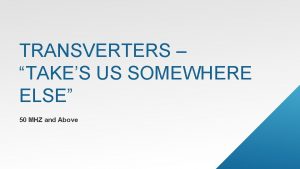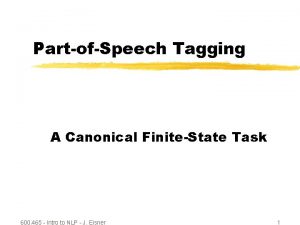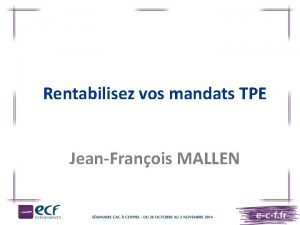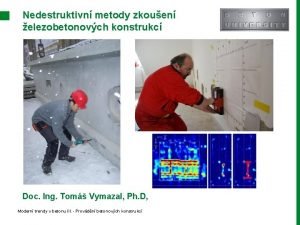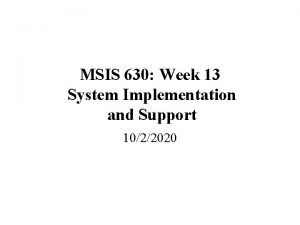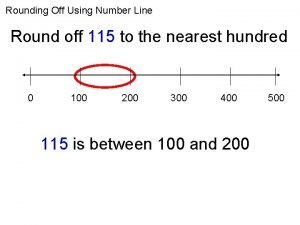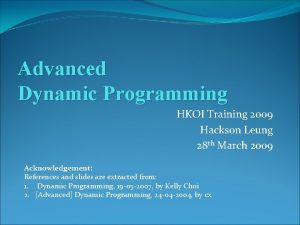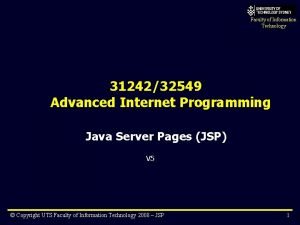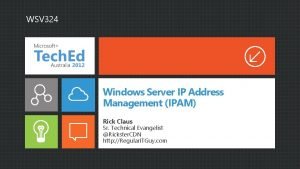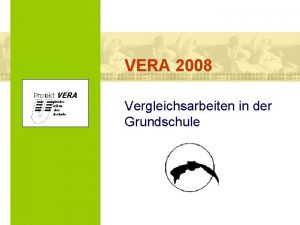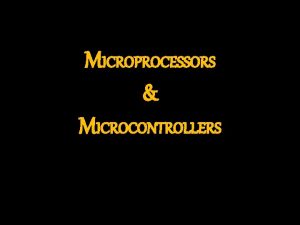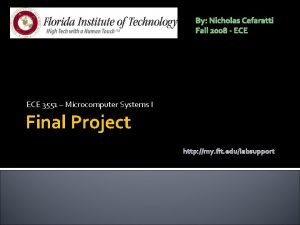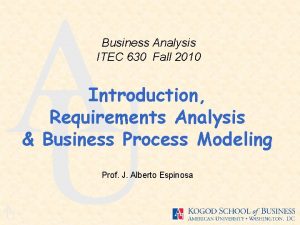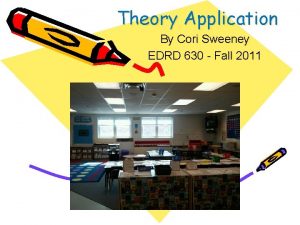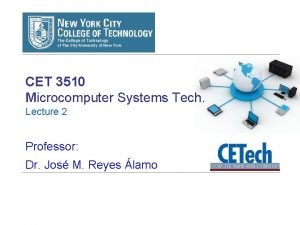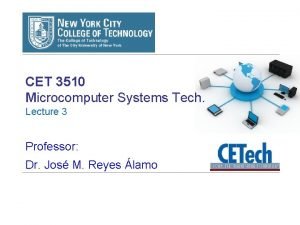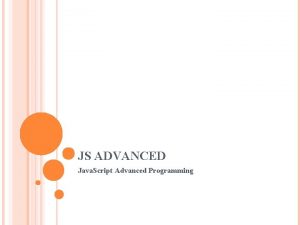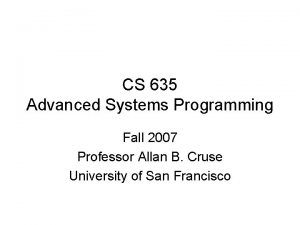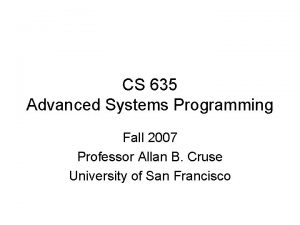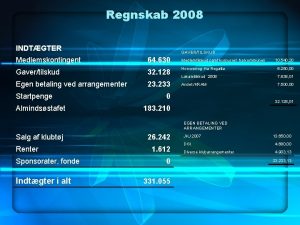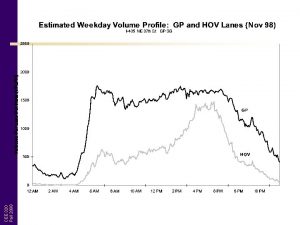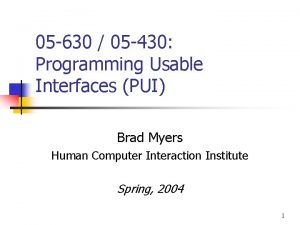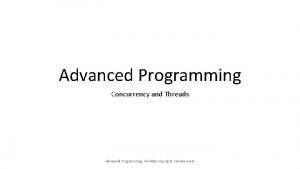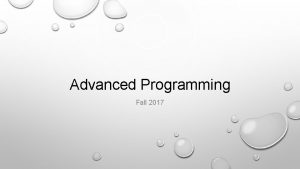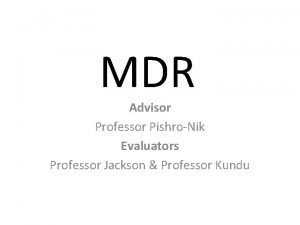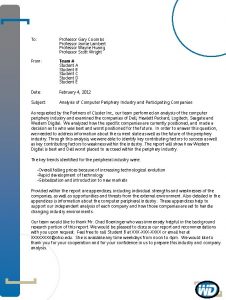CS 630 Advanced Microcomputer Programming Fall 2008 Professor































- Slides: 31

CS 630: Advanced Microcomputer Programming Fall 2008 Professor Allan B. Cruse University of San Francisco

Course Synopsis • We study Intel-64 processor architecture • It’s implemented in our Core-2 Quad CPU • We pretend we’re using a ‘bare machine’ (i. e. no operating system to ‘hide’ what’s going on, just standard PC hardware and accompanying vendor-supplied firmware) • So we get to build our own miniature OS • Doing this will bring us face-to-face with the CPU’s most fundamental capabilities

Methodology • Our interactive computer classroom lets us take a ‘hands on’ approach to our studies (i. e. , we combine ‘theory’ with ‘practice’) • Typically we’ll devote first part each class to a ‘lecture’ about aspects of x 86 theory • Then we’ll take time in the second part of class for ‘laboratory exercises’ that put the newly learned ideas into ‘working code’

Course prerequisites • Experience with C / C++ programming • Familiarity with use of Linux / UNIX OS • Acquaintance with x 86 assembly language – Knowledge of the x 86 general registers – Awareness of the x 86’s instruction-set • Understand the CPU’s fetch-execute cycle • Recall the ways memory is addressed

Simplified component diagram Central Processing Unit Main Memory system bus I/O device … I/O device

Review of the legacy x 86 API EAX CS EBX DS ECX ES EDX FS ESI GS EDI SS EBP ESP General Registers (32 -bits) Segment Registers (16 -bits) EIP EFLAGS Program Control and Status Registers (32 -bits)

Review of Instruction-Set • • Data-transfer instructions (mov, xchg, …) Control-transfer instructions (jmp, call, …) Arithmetic/Logic instructions (add, or, …) Shift/Rotate instructions (shr, rol, …) String-manipulation instructions (movs, …) Processor-control instructions (cli, hlt, …) Floating-point instructions (fldpi, fmul, …)

Review “Fetch-Execute” Cycle main memory central processor Temporary Storage (STACK) ESP Program Variables (DATA) Program Instructions (TEXT) EAX EAX EIP the system bus

Steps in ‘Fetch-Execute Cycle’ Fetch next instruction Advance instruction-pointer Decode fetched instruction Execute decoded instruction no INTR ? yes Interrupt Service Routine

Review of operand addressing • Implicit addressing (e. g. pushf, cbw, scasb, cli, xlat, …) • Register addressing (e. g. , mov %ax, %bx) • Direct addressing (e. g. , incl salary, movw $0, counter, …) • Indirect addressing (e. g. , add %dx, 0 x 14(%ebx, %esi, 2) )

Course Textbook • Tom Shanley, Protected Mode Software Architecture, Addison-Wesley (1996) Initial reading assignment: Week 1: Read Part One (Chapters 1 -3) Week 2: Read Part Two (Chapters 4 -5)

Instructor Contact Information • Office: Harney Science Center – 212 • Hours: Mon-Wed-Fri 12: 30 pm-1: 15 pm and Tues-Thurs 6: 30 pm-7: 15 pm • Phone: (415) 422 -6562 • Email: cruse@usfca. edu • Webpage: <http: //cs. usfca. edu/~cruse>

CPU Execution Modes POWER-ON / RESET REAL MODE PROTECTED MODE SYSTEM MANAGEMENT MODE VIRTUAL 8086 MODE

The ‘pre-boot’ environment • • • None of the normal library functions No graphical desktop, no file-system No editors, compilers, debuggers No network-access, no mouse, no printer Only one of the four processors is active Only a tiny fraction of the system memory is accessible (only 1 -MB, out of 4096 -MB) • The method of addressing memory is very different from what we’re accustomed to!

64 KB Memory-Segments • Fixed-size segments (can be overlapping) • Segments start on paragraph boundaries • Segment-registers serve as “selectors” stack data code SS DS CS

Real-Mode Address-Translation Logical address: 0 x 12340 + 0 x 06789 --------0 x 18 AC 9 16 -bit segment-address 16 -bit offset-address 0 x 1234 0 x 6789 x 16 + 20 -bit bus-address Physical address: 0 x 18 AC 9

Using ROM-BIOS functions • Our system firmware provides many basic service-functions that real mode programs can invoke (this includes ‘boot-loaders’): – Video display functions – Keyboard input functions – Disk access functions – System query functions – A machine ‘re-boot’ function

A valuable Online Reference • Professor Ralf Brown’s Interrupt List (see webpage link under ‘Resources’) • It tells how to make BIOS system-calls, to perform numerous low-level services from within Real-Mode 8086 applications (such as ‘boot loader’ programs)

Power-On CS: IP ROM-BIOS Expansion ROMs Video BIOS VRAM 1 -MB uninitialized memory area DRAM

System setup ROM-BIOS CS: IP Expansion ROMs Video BIOS VRAM Extended BIOS Data Area EBDA 1 -MB DRAM Interrupt Vector Table ROM-BIOS DATA AREA RBDA IVT

Bootstrap Loader ROM-BIOS Expansion ROMs Video BIOS VRAM Extended BIOS Data Area EBDA 1 -MB DRAM CS: IP Interrupt Vector Table BOOT_LOCN ROM-BIOS DATA AREA RBDA IVT Disk Storage

A very short example // smile. s. section. text # our linker needs this name mov mov int $0 x 0 E, %ah $0 x 01, %al $0 x 00, %bh $0 x 10 # BIOS function-selector # character-glyph selector # display-page selector # invoke ROM-BIOS service freeze # enter an infinite loop 510 0 x 55, 0 x. AA # offset to boot-signature # value for boot-signature # nothing more to assemble freeze: jmp. org. byte , end

Assemble, link, and install # Use the GNU/linux assembler to translate source-code to object-code: $ as smile. s -o smile. o # Use the GNU/Linux linker to convert object-code to binary-format: $ ld smile. o -T ldscript -o smile. b # NOTE: This linking step requires using a special ‘linker-script’ in order # to override the default ELF-format output-file (the customary format of # a file that the Linux operating system knows how to load and execute) # Copy the binary-executable to the place on our CS 630 disk-partition # where the GRUB boot-loader will expect to find it: $ dd if=smile. b of=/dev/sda 4

Our ‘fileview’ utility • You can use the ‘fileview. cpp’ program (on our cs 630 course-website) as a convenient tool for viewing files: $. /fileview smile. b • Since ‘fileview’ also works with device-files (if you have the required read-permission), you can verify that ‘smile. b’ is successfully installed on our CS 630 disk-partition: $. /fileview /dev/sda 4

Observations • Our ‘smile. s’ program-code does not make use of any assembly-language labels, nor does it use any instructions that would be differently translated for the ‘real-mode’ pre-boot execution environment than for the ‘protected-mode’ environment used by Linux application-programs • A few different coding-conventions would be needed when these conditions change

Example • Any assembly-language instruction that refers to a 16 -bit (or to a 32 -bit) register will need to be assembled differently for ‘real-mode’ execution • This is accomplished using the. code 16 assembler directive: mov $0 x 1301, %ax . code 16 mov $0 x 1301, %ax # inserts an operand-size override prefix # needed for correct ‘real-mode’ execution # omits the operation-size override prefix

Symbolic addresses • The linker assumes your code will reside in memory at an address-offset equal to 0, so it assigns address-values to all of your program-symbols accordingly • But the bootstrap-loader places your code at an address-offset equal to 0 x 7 C 00 ! • Thus you must perform a ‘renormalizing’ operation if you want to use your symbols

Example that uses symbols. code 16. section. text ljmp $0 x 07 C 0, $main # for x 86 ‘real-mode’ mov mov int %cs, %ax, %ds %ax, %es $msg, %bp len, %cx $0 x 0009, %bx $0 x 0 A 28, %dx $0 x 1301, %ax $0 x 10 # address program data # with DS register # also ES register # point ES: BP to string # string-length into CX # page and color in BX # row and column in DX # ‘write_string’ function # invoke BIOS service freeze: jmp freeze # enter an infinite loop msg: len: “ Hello, world! n”. – msg # text-message to display # length of the message # (this renormalize CS: IP) main: . ascii. short

Effect of the long-jump BOOT_CODE IP = 0 x 7 C 00 BOOT_CODE IP = 0 x 0005 CS = 0 x 07 C 0 Now all the symbol offsets are correct, relative to segment register CS CS = 0 x 0000 BEFORE… AFTER…

In-class exercise #1 • Download the textfile ‘welcome. s’ from our class website into your own subdirectory: $ cp /home/web/cruse/cs 630/welcome. s. • Then assemble it (use ‘as’), link it (use ‘ld’) and install it (use ‘dd’) on your hard disk’s partition • Reboot your computer, and select the GRUB menu-option which will ‘execute’ that code • Did you see the welcome-message? Were you able to ‘reboot’ by simply pressing a key?

In-class exercises #2, #3, #4 • Can you modify the ‘welcome’ message so that is will also include your name? Can you change the color from green to red? Can you make the message appear near the bottom of the console screen?
 2008 2008
2008 2008 Promotion from assistant to associate professor
Promotion from assistant to associate professor Microcomputer features
Microcomputer features Mini computer usage
Mini computer usage Microcomputer architecture
Microcomputer architecture Difference between plc and microprocessor
Difference between plc and microprocessor Microcomputer
Microcomputer 50mhz transverter
50mhz transverter Prime factorization of 630
Prime factorization of 630 Afrotc form 48
Afrotc form 48 Nep 330
Nep 330 866‑630‑9305.
866‑630‑9305. Form 630 orea
Form 630 orea Profometer pm-630
Profometer pm-630 630*13
630*13 Round 650 to the nearest hundred
Round 650 to the nearest hundred Advanced dynamic programming
Advanced dynamic programming Advanced internet programming
Advanced internet programming Pool table in assembler
Pool table in assembler For imperative statement 2 pass assembler
For imperative statement 2 pass assembler Advanced programming in java
Advanced programming in java Perbedaan linear programming dan integer programming
Perbedaan linear programming dan integer programming Greedy vs dynamic programming
Greedy vs dynamic programming Runtime programming
Runtime programming Linear vs integer programming
Linear vs integer programming Definisi linear
Definisi linear Windows server 2008 ip address management
Windows server 2008 ip address management 2008-2009 school year
2008-2009 school year After warhol double mona lisa peanut butter and jelly
After warhol double mona lisa peanut butter and jelly Projekt vera 3
Projekt vera 3 Microsoft server
Microsoft server 2008 generation called
2008 generation called


